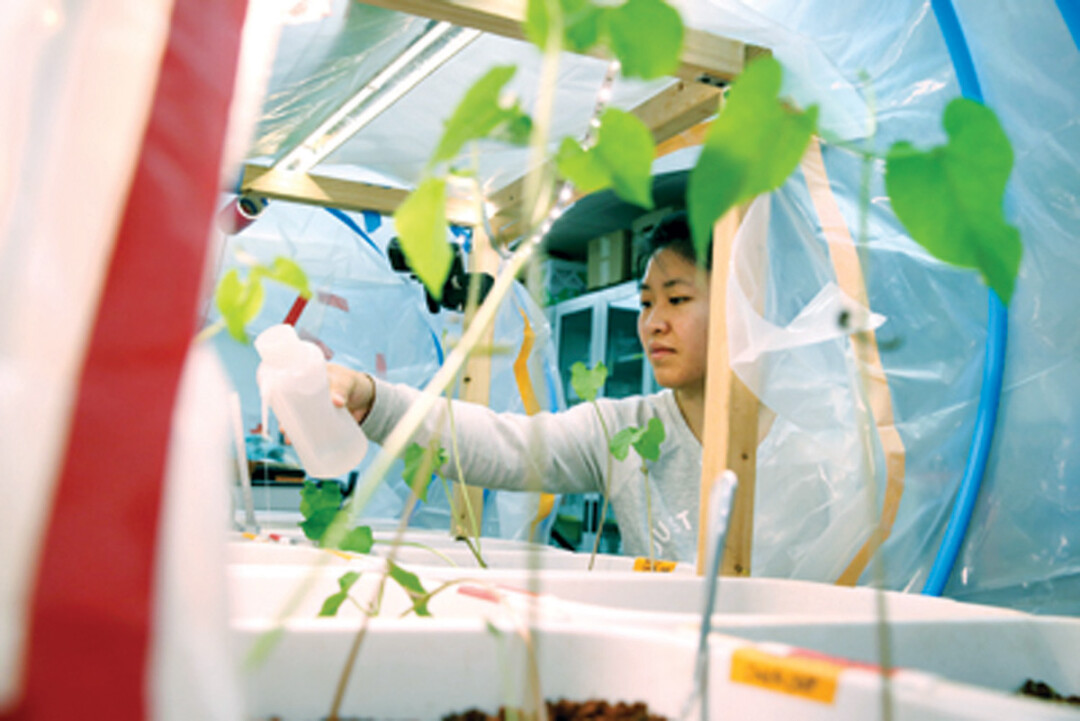Life On Mars: UW-Stout team proves The Martian’s food theory

Lack of space driving up real estate prices? Have no fear, folks, because habitation on Mars may become a plausible option in the near future.
Two UW-Stout faculty members have embarked on an experiment that could debunk the old idea that the Red Planet cannot support life. But now that water was recently found on the barren landscape, it’s more realistic than ever. Attempting to recreate a Martian habitat of their own, physics professor Matt Kuchta and biology professor Mandy Little have developed courses designed to investigate the properties of mock Martian soil.
Recently, moviegoers have watched in awestruck wonder as Matt Damon figured out how to grow food and survive on the arid, lifeless planet. The Martian, a blockbuster hit directed by Ridley Scott, triggered a handful of scientists and botanists alike to question the actual potential for cultivating and sustaining plant life in such an extreme environment.
Kuchta and Little were among these curious ones, and they decided that the best way to get to the bottom of their probing questions was to create a Martian-like habitat – or “Hab” – of their own.
The professors are achieving this by examining the growing conditions of soil that has been modified to replicate Martian dirt. They procured 400 pounds of Chippewa County glacial till subsoil, which already contained Mars-like properties. Kuchta and Little cooked the material at 1,000 degrees until it decomposed into a completely inorganic substance. This resulted in a final product that was crusty, dry, and burnt-orange in hue.
Some students are experimenting with the soil in Kuchta’s Jarvis Hall lab, while others are conducting tests with Little in the campus greenhouse.
“In my class, ‘Soil Science and Conservation,’ the simulated Mars soil serves as an example for numerous concepts we will cover during the semester, such as physical and chemical properties of soil,” Kuchta explained. “In Dr. Little’s class, ‘Plants and People,’ the experiments are an opportunity to discuss plant biology and some of the basics regarding designing an experiment.”
From spuds to beans to everything in between, the UW-Stout science department has been able to grow countless varieties of nutritional plants and to prove their Mars-soil hypothesis a success.
“One of the reasons I developed this project is because I wanted my students to realize that the solutions to our problems often come from unusual places,” Kuchta said. “It’s not unreasonable to think that learning how to grow food in space, or another planet, will help us find ways to grow enough food for over seven billion people here on earth.”
So what’s the secret? How are these students and scientists seemingly recreating a Hollywood scene and growing food in virtually lifeless soil? Kuchta said that with just a little nutrient boost of water and organic material, a seed can thrive in less-than-ideal conditions.
“A seed contains a lot of food to help the new plant get started – even in very poor soil,” explained Kuchta. “I think the real secret to growing food on Mars will be to make sure astronauts can provide important nutrients and maintain proper soil chemistry so that those nutrients are available to the plant.”
Whether it’s adding nutrients from hot sauce or packing peanuts, the Stout professors’ students have found that sometimes those things responsible for giving life are the most unexpected.
“I love the sense of amazement my students get when they see plants growing in this sterile, rusty-red soil,” Kuchta said. “And that is really my hope for the future – that people will always look at something as normal and everyday as a plant growing in some dirt and be able to find something new and inspiring.”
For more information on the experiments, visit Kuchta’s blog at dirt-lab-dispatch.blogspot.com.


















